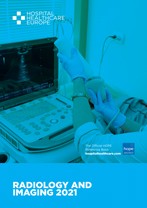Radiologist review of imaging requests prevents unnecessary exposure to radiation, inappropriate and duplicate examinations and makes the overall delivery of services both safer and more efficient. Recent RCR guidance advises on setting up efficient processes for vetting and communication.
An often under-recognised role of radiologists is that of reviewing imaging requests. Such input can lead to the avoidance of inappropriate requests, unnecessary radiation exposure for patients and the potential to avoid duplication of examinations, which increases the workload burden of radiology departments. Moreover, communication with the original referrer as to why a request has been declined provides an opportunity for informative feedback and hence the effectiveness of any vetting procedure is reliant on the establishment of a robust communication network.
Because radiologists are themselves qualified medical practitioners, they often have a good understanding of the appropriate imaging modalities required for specific conditions and in particular age groups, after a consideration of any prior tests (both radiological and non-radiological). Thus, there is much to be gained through incorporation of radiologists as members of the multi-disciplinary team (MDT), to enable alignment of investigations and preferences for the mode of imaging. A further and relevant benefit of radiologist involvement with MDTs is that it can serve to improve the overall efficiency, cost-effectiveness, safety and delivery of radiology services.
The role of radiologists is becoming more patient-focused, and this is likely to be expanded in the years to come with the development of rapid access diagnostic centres and one-stop imaging/biopsy/clinical pathways, especially where diagnostics become a first step within many patient pathways.
Staff involved in vetting requests
The report includes a section discussing the vetting process and who should be involved. While an important aspect of their work, the vetting process undertaken by radiologists is often not fully recognised as a clinical task and unfortunately there is no national benchmarking of vetting activity. The report suggests that vetting should be used as a benchmark to ensure that it supports the specific recommendations for radiologists detailed in the National Health Service (NHS) document, Choosing Wisely (https://www.choosingwisely.co.uk/).
The Royal College report suggests that modality-based radiographers, using appropriate protocols and with suitable training, can undertake vetting of requests for computer tomography, magnetic resonance imaging and ultrasound. Such individuals are likely to be much more comfortable cancelling, for example, a duplicate request, but given that radiographers are not medically qualified, they are less likely to refuse a test on clinical grounds. Under such circumstances, the report advises that requests for more specialist or complex imaging, are best left to a radiologist or special interest radiologist, to ensure that the request is appropriate. In addition, where a radiographer has any concerns or is uncertain about whether to decline a test, the request should be forwarded to the radiologist. Thus, good communication within the radiology department is a prerequisite to ensuring that an appropriate protocolling and vetting procedure is introduced.
Technology requirements for vetting
On a practical level, the report recommends that an effective vetting process is carried out using the radiology information system (RIS), which is the most commonly used system in the NHS. However, while the structure of systems may differ across the NHS due to the presence of different vendors, the report defines the process which should be available to radiology departments, despite the presence of different vendors. Using RIS, it should be possible to communicate the reason for cancelling a scan and in making such decisions, radiologists should have access to the full local imaging history and should be able to have their vetting workload recognised as an activity.
In an appendix to the document, there is a RIS specification for the vetting and protocolling workflow.
The full document can be found here:





